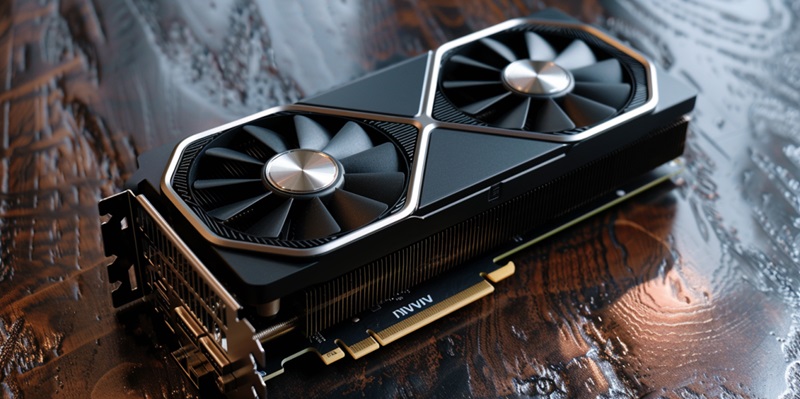As speculation continues to mount surrounding Nvidia’s next-generation GeForce RTX 5000 series desktop graphics cards, industry insiders and enthusiasts alike are eagerly awaiting more concrete details. The notable leaker Kopite7Kimi recently ignited excitement by suggesting that these highly anticipated GPUs might not hit the market in 2024. Instead, all eyes are now on the first week of January 2025, when Nvidia is expected to unveil its new offerings at the Consumer Electronics Show (CES). This timing would break from Nvidia’s recent tradition, marking the first major desktop GPU launch at CES in many years.
The Driving Factors Behind the Delay
Nvidia’s Strategic Focus Shift
The delay in Nvidia’s launch of the GeForce RTX 5000 series is attributed to multiple strategic factors, chief among which is the current lack of immediate competition from rival AMD. With AMD not planning to introduce high-end RDNA 4 models anytime soon, Nvidia appears to be leveraging this window to focus heavily on its enterprise-centric offerings. With the advent of advanced AI technologies and the growing demand for AI applications, Nvidia is prioritizing its AI-enabling products over its gaming series. This shift in focus suggests that gaming SKUs, which have historically been at the forefront of Nvidia’s product lineup, are now taking a backseat at least temporarily.
Adding to the complexity are the supply chain and manufacturing constraints that the company faces. With Nvidia’s enterprise-related GPUs being in high demand, the production capacity is being directed toward fulfilling these lucrative contracts. This calculated move might disappoint gaming enthusiasts in the short term, but it underscores Nvidia’s long-term strategy to dominate the AI sector. The company’s strategic pivot toward AI is a clear indication that it is betting big on the future of enterprise technology, even if it means postponing consumer-oriented products like the RTX 5000 series.
Product Specifications and Market Positioning
Previously, Kopite7Kimi hinted that the GeForce RTX 5080 would launch ahead of the RTX 5090 and other subsequent models, providing an interesting twist in Nvidia’s typical release strategy. The flagship GB202 GPU is anticipated to feature cutting-edge advancements, including a 512-bit wide bus and the latest GDDR7 memory. Notably, these specifications are poised to make their way into some high-performance laptop models as well, enhancing their appeal to both gamers and professionals who require robust graphics capabilities.
Conversely, the downside lies in Nvidia’s approach to mid-range and entry-level laptop GPUs. These models will continue to be restricted to 8 GB VRAM, which is increasingly considered inadequate for modern gaming experiences. This dual approach of offering top-tier performance in higher-end models while limiting capabilities in the mid-range segment raises questions about Nvidia’s broader market strategy. It suggests the company is focusing heavily on the high-performance segment to maintain its market leadership, possibly at the expense of everyday gamers looking for more affordable options.
Manufacturing Insights and Architectural Changes
Innovation and Incremental Upgrades
The Nvidia GeForce RTX 50 series is set to be manufactured on TSMC’s 4NP node, an advancement expected to bring additional efficiencies and performance gains. Yet, rumors indicate that the new desktop graphics card models, including the GB203 and GB205 GPUs, will maintain similar bus widths to their predecessors, the AD103 and AD104. This information hints at an incremental rather than a revolutionary upgrade in terms of architectural and performance enhancements. While incremental improvements are not inherently negative, they do suggest that the RTX 5000 series may not be the groundbreaking leap some enthusiasts were hoping for.
This cautious approach by Nvidia might reflect a calculated risk, focusing on stability and reliable performance enhancements over experimental leaps in technology. Though this strategy may temper some of the more fantastical expectations, it ensures that the new series will likely deliver steady, dependable improvements across the board. This method helps to manage consumer expectations while providing a solid foundation for future innovations.
Anticipation for CES 2025
As anticipation grows for Nvidia’s next-generation GeForce RTX 5000 series desktop graphics cards, the tech community is buzzing with excitement. Both industry insiders and enthusiasts are eagerly awaiting more substantial information to satisfy their curiosity. Recently, the well-known leaker Kopite7Kimi stirred the pot by hinting that these eagerly awaited GPUs might not be released in 2024 after all. Instead, the focus has shifted to the first week of January 2025. This pivot has led many to speculate that Nvidia plans to unveil its new graphics cards during the Consumer Electronics Show (CES). If this timing holds true, it would represent a significant departure from Nvidia’s recent patterns, as it would be the first major desktop GPU launch at CES in many years. The tech world is keeping a close watch on Nvidia, as this could set new benchmarks for GPU performance and innovation. The potential CES debut adds an extra layer of prestige and suspense, making the wait for these groundbreaking GPUs even more thrilling.

